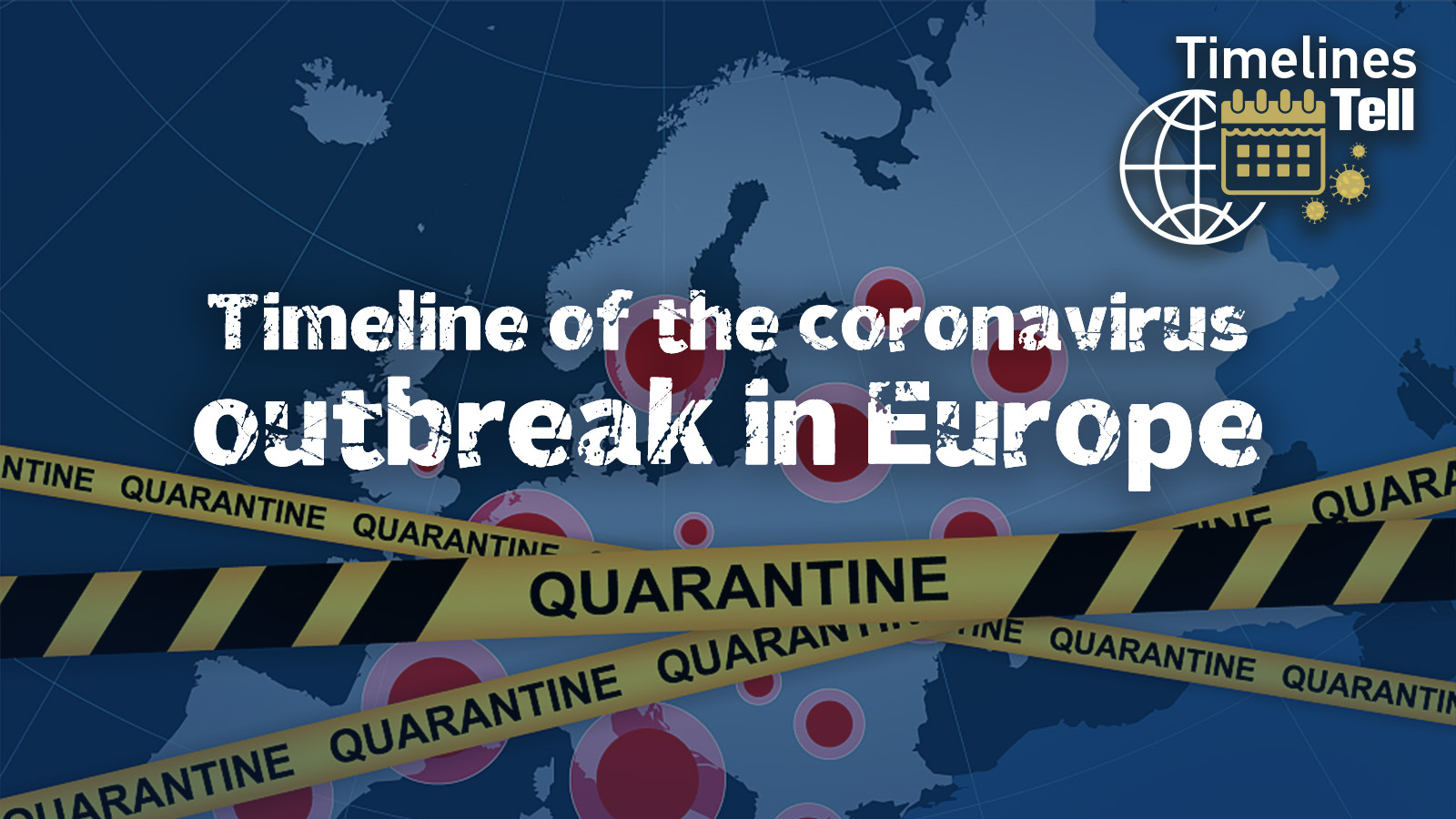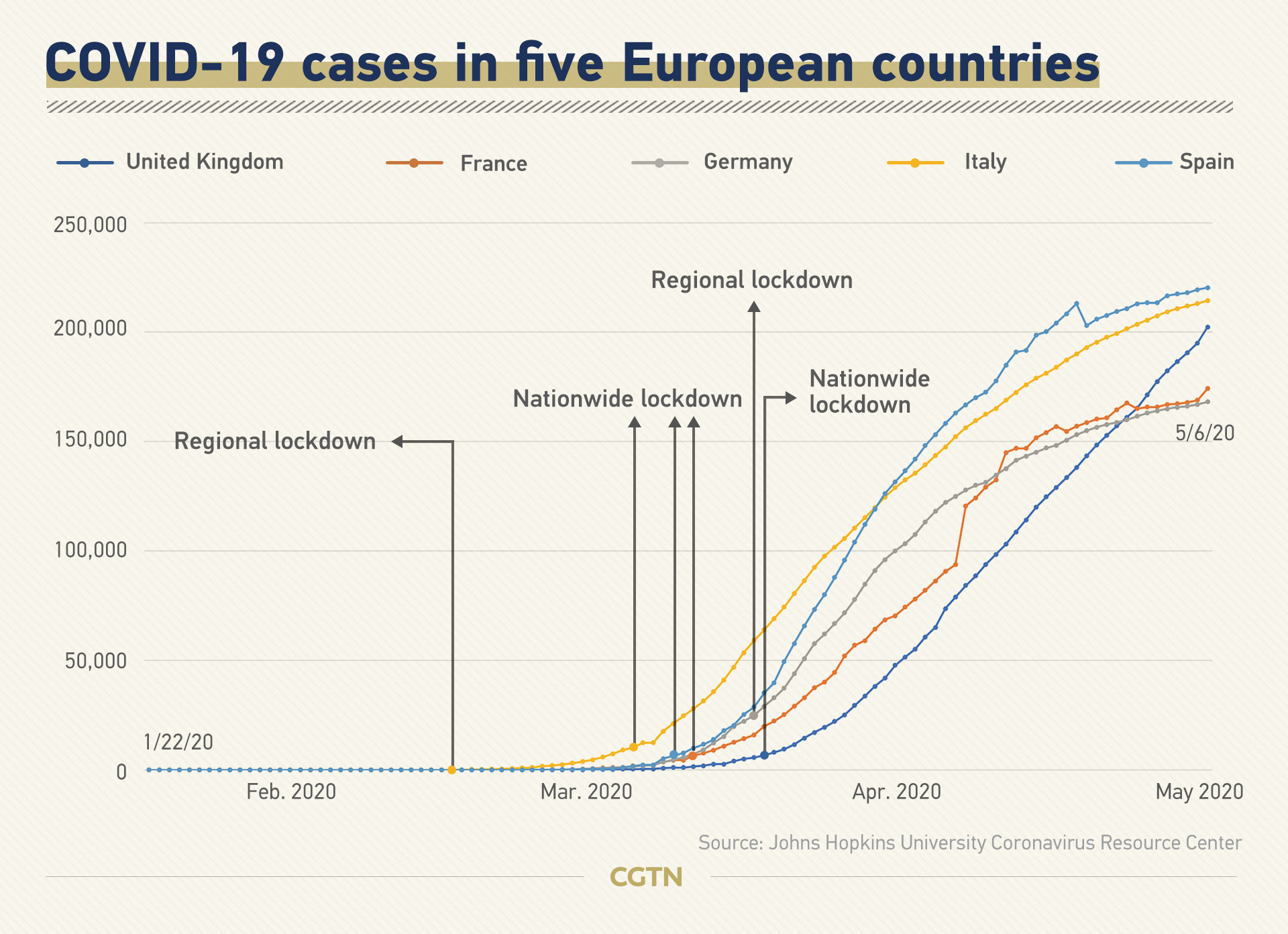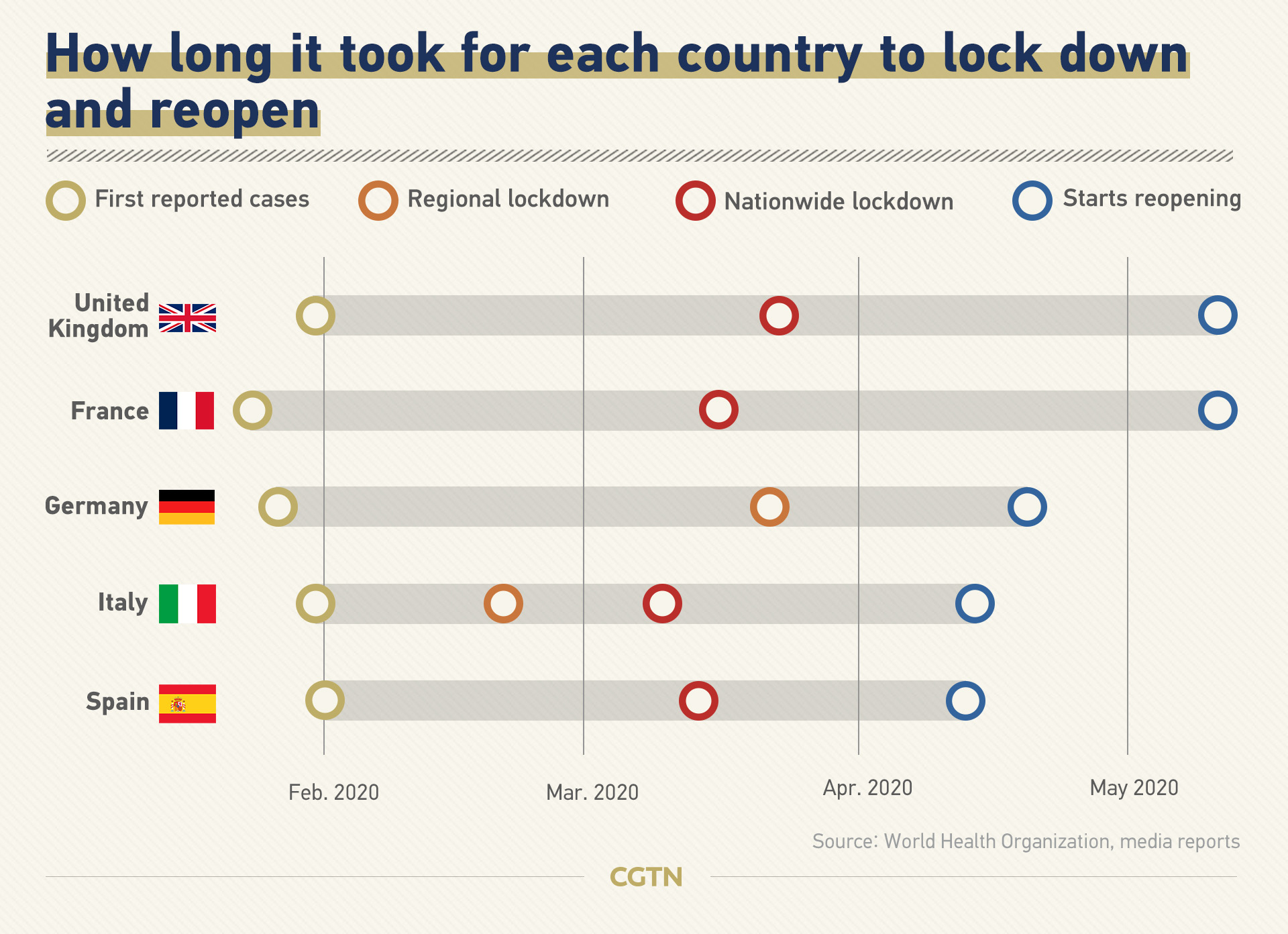
Europe is eager to get moving again. After weeks of living under lockdown in a collective effort to flatten the curve of COVID-19 infections, millions of Europeans are going back to work and schools, and reuniting with loved ones. But it will be a long time before life returns to what it was before the pandemic.
In the wake of more than 140,000 deaths and mounting economic toll, European leaders are understandably cautious with lifting restrictions, monitoring the situation closely as they let citizens out of the lockdown.
Major countries in Europe have all been hit hard by the ongoing pandemic. After the World Health Organization (WHO) declared Europe the new epicenter of COVID-19 outbreak in March, Italy, France, Spain, Britain and Germany reported the most cases and deaths in the continent, where deserted streets, minimal human interactions and feelings of uncertainty became the new normal.
The European Central Bank said last week that the euro-area economy will shrink five percent this year in a "mild" scenario, whereas more severe impacts could mean contractions of up to 12 percent.
How did we get here?


Early case points to new outbreak timeline
It was previously thought that the coronavirus first reached Europe's shores on January 24, when the first three cases, two of which from China, were confirmed in France. However, news this week suggesting unrecorded infections in the country dating back December could upend the original timeline of Europe's outbreak.
China, where the outbreak began, reported the new virus to the WHO on December 31. There were no known cases outside China until January 13.
But a Frenchman named Amirouche Hammar has revealed himself as an unrecorded coronavirus case in December, after doctors in France re-tested 24 flu samples taken between December to January. A positive test for Hammer on December 27 puts Europe's first known case nearly a month earlier, before the world was even aware of the new virus.
However, doctors say it's too early to know whether or not this patient was France's "patient zero."
The French health ministry said the government will investigate further if necessary.
The WHO said on Tuesday the French case was "not surprising" and urged countries to investigate pneumonia cases of unspecified origin in late 2019.
"This gives a whole new picture on everything," WHO spokesman Christian Lindmeier said at a UN briefing in Geneva. "The findings help to better understand the potential virus circulation of COVID-19." Lindmeier added that other earlier cases could emerge after retesting samples.
This wouldn't be the only unsolved mystery relating to a possibly earlier COVID-19 patient in Europe.
On February 21, an unexplained community spread came to light in Italy's northern region of Lombardy. A 38-year-old man from the area near Milan, dubbed Italy's "patient one," is believed to be the source of the outbreak in the country's north.
The clusters in Italy prompted the earliest lockdown measures in Europe, and subsequently ballooned into one of the deadliest outbreaks in the world. It remains unclear how the local man with no China-related travel history became infected in the first place.
Massimo Galli, director of the Biomedical Research Institute in Milan, told Reuters that the epidemic probably started in Italy well before the "patient one" fell ill. By analyzing genetic sequencing of the virus, Galli's team found evidence suggesting that the virus was brought to Italy by someone infected in the German city of Munich between January 19-22.
If the scientists were right, the virus would have been present in Italy before the country reported its first two cases and suspended travel from China on January 31.

Medical staff tend to a patient in the emergency COVID-19 ward at the San Carlo Hospital in Milan, Italy, April 16, 2020. /AP
Medical staff tend to a patient in the emergency COVID-19 ward at the San Carlo Hospital in Milan, Italy, April 16, 2020. /AP
Meanwhile, Spanish researchers have ruled out the hypothesis that a "patient zero" caused the dramatic outbreak in Spain. The country recorded its first case on February 1, and now has the highest number of confirmed cases in Europe and the second highest in the world.
"There is no 'patient zero' when an epidemic is already so widespread," said geneticist Fernando Gonzalez Candelas from the Valencian Fisabio foundation. "Based on the information we have today, we believe that there were at least 15 different entries in Spain."
Scientists at University College London's Genetics Institute studied the genomes of more than 7,500 samples from infected patients around the world and discovered that the coronavirus spread far quicker than originally thought after it emerged sometime between October 6 and December 11, which corresponds to the time of the host jump from animal to human.
Lockdown worked, what's next?
The unprecedented lockdowns seen across Europe were proportional with the perceived threat to each country and to Europe as a whole. Not only did the European Union shut its door to the outside, countries within the Schengen area also closed borders with one another, reversing decades of free movement.
After Italy's outbreak spiraled in March, most neighboring countries adopted extraordinary measures to contain the growing epidemic, practically putting a stop to all economic activities and social life.
In April, new COVID-19 cases and deaths in Italy and Spain dropped to pre-lockdown levels. Countries where the worst is believed to be over have begun phased reopening with social distancing measures in place.
Read more:
One-month lockdown in Italy: Is it working?
How will a 'reopening' look like?

Signs showing where people should sit or stand inside a subway train in Milan, Italy, April 30, 2020. /AP
Signs showing where people should sit or stand inside a subway train in Milan, Italy, April 30, 2020. /AP
The earliest countries to impose a partial or full lockdown, Italy and Spain were also the first to be able to reopen. But Spanish Prime Minister Pedro Sanchez has warned that his country was "far from victory" in its fight against the coronavirus.
Germany, despite being one of the last to implement lockdown measures, has been widely lauded for keeping fatalities low through vigorous mass testing and early detention. However, as the country allowed some businesses to reopen this week, the infection rate rose slightly, raising fears about a second wave. Lothar Wieler, head of Germany's Robert Koch Institute, stressed the need to maintain certain safety protocols.
Britain, where the fatality rate is worryingly high, was one of the last to enter a lockdown. The British government also believes the country is past the worst, and is looking to ease some restrictions on May 11.
Reopening must follow a fine line, said French Prime Minister Edouard Philippe, who has laid out a roadmap to restart the economy from May 11. "Too carefree and the epidemic restarts; too cautious and the entire country sinks," he said.
The WHO has warned that while it was "happy to see slowdown in COVID-19" in the hardest-hit European countries, lifting restrictions on movement must be based on protecting human health.
To prevent a new wave of infection, governments and countries should apply active strategies including mass testing, isolation of new cases, contact tracing and remote symptoms monitoring, according to a team of researchers in Boston. Using realistic modeling, the U.S.-based study concluded that social distancing and complete isolation of the population are working and should continue.
Authorities in Europe have acknowledged that without a vaccine, people will need to prepare to coexist with the virus, and certain restrictions are here to stay.
While the details of each country's exit strategy may differ, certain measures, such as mask-wearing in public, social distancing and working from home, will likely become a standard part of life for the foreseeable future.
Data editor: Yu Jing
Cover photo and graphics by Li Jingjie